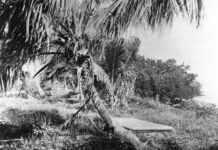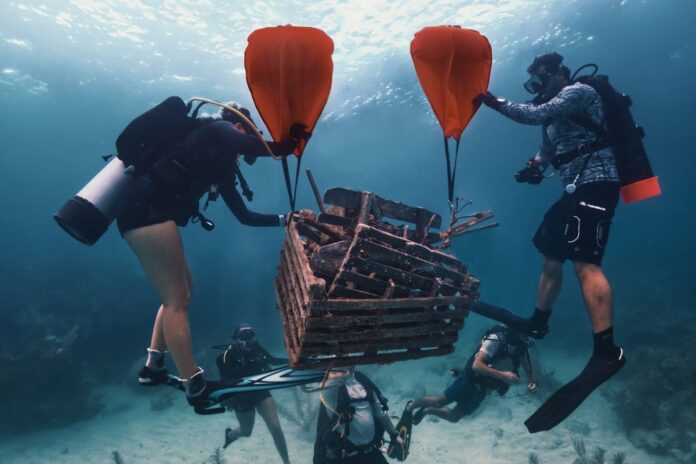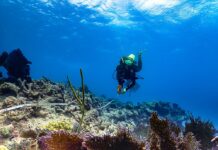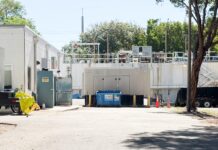Lurking in the waters off the Florida Keys, a haunting presence is luring marine life to their untimely demise and trapping their spirits in an underwater purgatory. This isn’t the plot of a new Halloween blockbuster, it’s the unfortunate impact of derelict fishing equipment known commonly as “ghost traps.”
To help tackle this ghoulish problem, Ocean Aid 360 and the National Marine Sanctuary Foundation have been awarded funding through the National Fishing Trap Removal, Assessment and Prevention (TRAP) Program, administered by William & Mary’s Batten School of Coastal & Marine Sciences & VIMS.
Ocean Aid 360 received $150,000 to mobilize commercial fishers, trap data collectors, and volunteer coastal residents and watershed groups to detect and remove derelict spiny lobster and stone crab traps throughout the Keys. Beginning in 2026, their efforts will include a robust pre- and post-removal monitoring component to measure natural resource and economic benefits related to the cleanup.
Meanwhile, the National Marine Sanctuary Foundation was awarded $146,553 to remove derelict spine lobster and stone crab traps from the coastal waterways of NOAA’s Florida Keys National Marine Sanctuary. The Foundation will conduct SCUBA-based surveys to locate and remove traps that are otherwise inaccessible from the surface — an approach that also supports informed decision-making for the management of critical marine habitats.
Each year in the United States, commercial fishing traps are lost due to vessel-gear interactions, storms and gear degradation. These ghost traps become inaccessible to fishermen but continue to function, resulting in mortality of both target and non-target species, habitat damage and reduced fishery landings. A 2016 report found that removing just 10% of derelict crab pots and lobster traps could result in an additional $831 million in global landings annually.

This is the second year that both organizations have received clean up funding through the National TRAP Program, which is supported by an initial $8 million, four-year grant from the National Oceanic and Atmospheric Administration’s (NOAA) Marine Debris Program.
Ocean Aid 360’s first-year efforts focused on the removal of marine debris and derelict traps in the Tampa Bay estuary and resulted in the removal of 3,478 derelict spiny lobster and stone crab traps. The National Marine Sanctuary Foundation removed nearly 300 hard-to-reach spiny lobster traps in the Florida Keys National Marine Sanctuary in 2025.
Data from each TRAP Program partner is fed into a national database to evaluate the environmental and economic benefits of the removal efforts and to inform future policies.
“We are thrilled with the initial results from our inaugural TRAP Program recipients. Their success is a testament to the impact that locally-designed solutions can have on global issues,” said Kirk Havens, director of the Batten School & VIMS Center for Coastal Resources Management, which administers the TRAP Program under the direction of co-principal investigators Professor Donna Bilkovic and Associate Professor Andrew Scheld. “Our second round of recipients have demonstrated that same creativity, thoughtfulness and local community engagement in their project proposals, and we are proud to support them as they work for the benefit of their communities and marine ecosystems.”
Visit the National TRAP Program website for additional information about program partners and statistics from first-round projects.



















